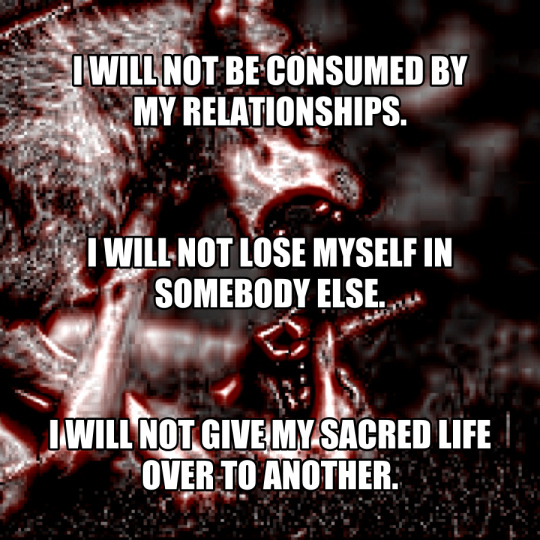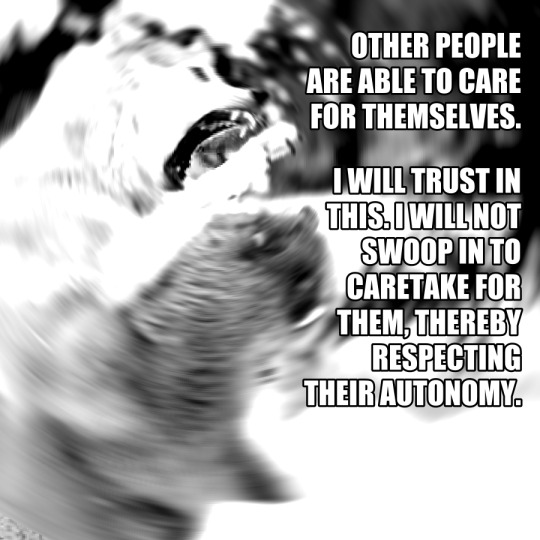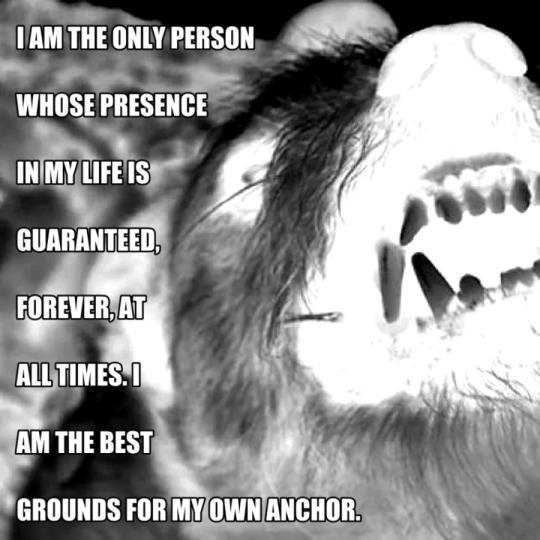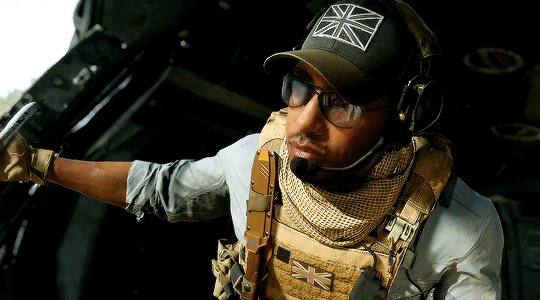#Attachment styles
Explore tagged Tumblr posts
Text

aiko :/
#bpd yandere#bpd core#irl yandere#obsessed#love#obsessive yandere#yanderecore#yandere#obsession#bpd attachment#bpd fp#bpd vent#actually bpd#bpd feels#bpd thoughts#bpd blog#bpd problems#bpd stuff#bpd#borderline personality disorder#actually yandere#irl yan#yandere thoughts#yande.re#goodnight punpun#yancore#yandere coping#attachment styles#actually borderline#anime
636 notes
·
View notes
Text
Latest hobby: radical self-acceptance codependency affirmations






I like to use over-the-top edgy imagery to invoke the ~emo~ sentiments we associate with edge, juxtaposing the aggressively self-loving text. accentuates the punk nature of radical acceptance
#guiltyedits#radical self acceptance#affirmations#codependency#recovering codependent#edgy#grunge#hopepunk#dogs#wolves#cats#life necessity#favorite person#bpd fp#cluster b#personality disorder#trauma#attachment styles#people pleaser#caretaking#manipulation#unhealthy obsession#unhealthy relationships#addiction#behavioral addiction#to thine own self be true#codapunk#autonomy#consent culture#borderline personality disorder
3K notes
·
View notes
Text
Attachment Styles in Relationships
Attachment styles are the ways people feel and act in relationships, based on their early experiences with parent or guardian. There are four main types:
Secure Attachment:
Healthy: Feeling comfortable with your partner and being able to share your feelings and needs openly. Trusting them and supporting each other without feeling overly worried about the relationship.
Unhealthy: Becoming overly dependent on your partner, feeling anxious or upset if they spend time away, or constantly seeking reassurance and validation.
Anxious Attachment:
Healthy: Expressing your emotions and needs to your partner, and valuing emotional closeness. Feeling secure when your partner reassures you and staying connected during difficult times.
Unhealthy: Constantly worrying about your partner leaving you, feeling jealous and possessive, or becoming too clingy and demanding in the relationship.
Avoidant Attachment:
Healthy: Valuing your independence and personal space while still being supportive and caring toward your partner. Understanding your emotions and expressing them in a balanced way.
Unhealthy: Pushing your partner away emotionally, avoiding discussions about feelings or conflicts, or being emotionally distant and unavailable.
Disorganized Attachment:
Healthy: Recognizing and addressing past traumas, working on building trust and emotional stability.
Unhealthy: Reacting impulsively or unpredictably in relationships due to unresolved traumas, struggling with forming and maintaining deep emotional connections, or experiencing extreme emotional highs and lows.
#healthy relationship#toxic relationship#relationships#relationship advice#personal improvement#personal development#emotional attachment#attachment issues#anxious attachment#avoidant attachment#attachment styles#glow up tips#level up journey#personal growth#self development#self improvement#self help#mental health#self love
3K notes
·
View notes
Text
your boyfriend isn’t texting you back? girl that’s just his avoidant attachment style. actually you should work on your anxious attachment style, wanting your partner to talk to you is definitely not normal.
also, why are you expecting him to do the dishes or give you presents? you know acts of service or gift giving aren’t his love languages. his love language is physical touch, aka sex.
#radical feminists do touch#radical feminism#rad fem#radical feminist safe#radblr#terfblr#terfsafe#feminism#gender critical feminism#love langauges#attachment styles
188 notes
·
View notes
Text
We ask your questions so you don’t have to! Submit your questions to have them posted anonymously as polls.
#polls#incognito polls#anonymous#tumblr polls#tumblr users#questions#polls about relationships#submitted june 8#attachment styles#attachment#emotions#relationships
452 notes
·
View notes
Text

Attachment Styles Mod | Sims 4
This mod makes it possible for your Sims to have an attachment style. Read more and download HERE on my Patreon.
#Sims4
731 notes
·
View notes
Text
Development of Vulcan attachment styles and in relation to telepathy: an analysis based on human developmental psychology and trek lore - P.1
I have been taking psychology classes in Uni and thinking about the development of attachment in Vulcan culture/civilisation
(Author's note- familial bonding in Vulcans is not exactly plainly stated in any Memory Alpha page, but it seems implied at the very least- either way, I might be borrowing from fanon.)
Attachment, in (human) children, develops toward their primary care-taker from the moment their cognitions allows object permanence, generally solidifying into an attachment structure at ~4-5 years old.
The behaviours from caretakers that encourage the development of a secure attachement style are, according to Boyd and Bee (2015) to keep the child in a calm, safe and non-stressful environment, to not let it cry too long before satisfying their needs, to encourage contact with others and to allow for exploration periods while also ensuring a reassuring and secure presence. Moments of synchrony between the caretaker and very young child allows the child to understand habits, and that their need are met with constancy, building the trust between the child and the caretaker.
Now, depending on these interactions in early childhood, a child can develop one of four internal models of attachments.
Secure attachment: The child will search the proximity of it's attachement figure (primary caretaker) after a separation or a stressful situation and will use it as a base of security when exploring
Anxious-avoidant attachment: The child avoids the contact to it's attachment figure and does not seem to prefer it to other people.
Insecure-ambivalent attachment: The child has a tendency to go on few explorations and seems perturbed when separated from it's attachment figure, but isn't secured when it returns or tries to comfort the child.
Disorganized/disoriented attachment: The child seem confused or afraid, and adopts contradicting behaviours with the attachement figure.
Now, in Vulcans, if we assume attachment is still a part of their development, how does telepathy and familial bonds play into it?
Telepathic bonds developed naturally between parents or close caregivers and children would play a great part in the development of attachment, as the bond would be the best indicator of the child's need, ensuring they are fulfilled. Also, despite Vulcan's general impassivity, such bond would allow them to give emotional feedback to their children, allowing them to feel, rather than see, the love, care, security and reassurance they needed from their parents/caregivers. As the child grows up, it would allow for the explorative behaviours crucial in the development of attachments, with the child being strongly aware of the strong base of security they have with their parents. It is why to outsiders Vulcan child appears more independent and detached, because they physically seek their parents for comfort less, benefiting from a mental reassurance if needed. As the child grows, frequent meld with attachement figures could be used both as displays of affections and as a safe place where the child could express and show their emotions to their parents while they learned to regulate them in the Vulcan way.
Now, what would be the implications of such a method for the development of attachment for a hybrid child like Spock, who might have not been able to naturally bond with his primary caretaker, his mother, a psy-null human, and who had a father we know never melded with him? And for Saavik, a half-romulan who's Vulcan parents likely died when she was very young and whose Romulan parent probably never met, who did not have a stable figure in her life until T'Pren and then lost her, and then only had a proper caregiver when Spock took her in?
Because these two in particular can be good examples of Anxious-Avoidant (Spock, namely in The Naked Time, Amanda's conflicting demands of him in Journey to Babel and the distance with Sarek, and him leaving for Gol when his feelings for Jim grew too much) and Insecure-Ambivalent (Saavik's aggressivity to anyone except Spock when on Symmetry in The Pandora Principle, her feeling still stuck in the events of her past later in her life, which lasted until Hellguard was destroyed.)
There's a lot of potential exploration I might do another time, and maybe this is all wrong because it's human psychology applied to Vulcans, but hey.
#psychology#attachment styles#attachment issues#vulcans#vulcan#telepathy#star trek#saavik#s'chn t'gai saavik#spock#s'chn t'gai spock#amanda grayson#sarek#s'chn t'gai sarek#the pandora principle#star trek novels#star trek tos#star trek movies#james t kirk
159 notes
·
View notes
Text
Pretty positive that Kyle Garrick has the most secure attachment style out of anyone on the 141, proving that he is by far the best boyfriend material.

#you can't change my mind#don't take this away from me#call of duty#cod#kyle gaz garrick#cod gaz#gaz cod#gaz kyle garrick#kyle garrick#cod headcanons#attachment styles#secure attachment
614 notes
·
View notes
Text
I bite every hand that tries to love me like some rabid dog. Because where I come from, hands were meant to hurt and punish, so how am I supposed to know the difference?
#dismissive avoidant culture is#dismissive avoidant#dismissive avoidant attachment#avoidant attachment style#attachment styles#avoidant attachment#attachment issues#actually mentally ill#actually bpd#bpd#bpd vent#actually borderline#bpd blog#bpd problems#bpd thoughts#bpd splitting#mentally fucked#bpd diary#bpd stuff#bpd diagnosis#depression thoughts#depression and anxiety#depressiv#sorry for being depressing#depressing shit#tw depressing thoughts#tw depressing stuff
68 notes
·
View notes
Text
the baggage
everyone comes into a relationship with baggage. most people drop it when carrying gets heavy. the right person helps you unpack. goes both ways. the question is - are you ready to unpack?
so you're either gonna trip over each other's stuff or you gonna unpack together. there's no other way. once you're ready for the latter, wash the dirty pieces first, handle them with care, then fold them nicely - in a shared closet.
home is built on all the stuff we carry around heavy trying to shake off or run away from, until we're ready to sit with them, unpack carefully, and eventually decorate our space with.
#spilled ink#spilled words#spilled thoughts#writers on tumblr#writerscommunity#writblr#ao3 writer#writers#spilled writing#writing#relationship stuff#love and relationships#relationships#emotions#love#artists on tumblr#poetblr#poetry#poets on tumblr#poetic#poet#feelings#healing#therapy#words of wisdom#wise words#wisdom#attachment styles#attachment issues#inspiring words
159 notes
·
View notes
Text
my attachment style is both anxious and avoidant.
i have a hard time expressing that i care about you but don’t you dare leave me
#actually aspd#actually npd#aspd#npd#clusterb#actually mentally ill#actually bpd#actuallyaspd#actuallynpd#cluster b#actuallybpd#actually cluster b#cluster b personality disorder#attachment issues#actually borderline#actually narcissistic#actually antisocial#antisocial personality disorder#narcissistic personality disorder#borderline personality disorder#avoidant attachment#anxious attachment#narc abuse isnt real#narc abuse isn't real#attachment styles#bpd safe#aspd safe#npd safe#mental illness#abandonment issues
359 notes
·
View notes
Text
If you're not familiar with the attachment style model, you can take a quiz here.
–
We ask your questions anonymously so you don’t have to! Submissions are open on the 1st and 15th of the month.
#polls#incognito polls#anonymous#tumblr polls#tumblr users#questions#polls about relationships#submitted jan 1#polls about sex#attachment styles#attachment#relationships
210 notes
·
View notes
Text
Avoidant attachment culture blog
This is for those with an avoidant attachment style (dismissive or fearful) to vent, talk about experiences or send in characters that you relate to.
This blog is run by an adult. Minors may follow and interact but be mindful and intentional with your actions.
> Also see @anxious-attachment-culture
Rules
- Open with "(dismissive/fearful) avoidant attachment culture is.." for each ask.
- Do not demean other attachment styles by making negative blanket statements about their nature e.g. "anxious attachers are always x". Avoidants go through this a lot and it does not give you the right to inflict it on others.
- You may submit asks if you only have avoidant tendencies or swing between attachment styles as long as it relates to the experience of being avoidant.
- Do not submit asks talking about avoidant partners/relationships if you are not avoidant yourself.
- You may use sign offs, they will be tagged for filing.
Information posts are here: #informative
Current sign offs
#🥀🪦
#🌠🐻
#chorus
#cyprus 👤
#🦕
This is run by >> @evilsystemm <<
Similar blogs
@narcissisticpdcultureis
@schizotypalpd-culture-is
@aspdculture-is
@hpdcultureis
@narccultureis
@borderline-culture-is
@cluster-b-culture
@cluster-b-culture-is
@cluster-c-pds-culture-is
@aro-culture-is
@ace-culture-is
@bi-culture-is
@avpdcultureis
@ndcultureis
@ocpd-culture-is-blog
@dpd-culture-is-blog
@schizotypal-culture-is
@schizoid-culture-is
@paranoia-culture-is
@ppd-culture-is
@ocd-culture-is
@plural-culture-is
@pluralculture
@osdd-culture-is
@contradictory-label-culture-is
@cluster-a-culture-is
@pdconfessions
@pd-culture-is
@anxiety-culture-iss
#avoidant attachment#avoidant#dismissive avoidant#fearful avoidant#disorganized attachment#anxious attachment#attachment styles#attachment style#secure attachment#dismissive avoidant attachment#fearful avoidant attachment#culture#avoidant culture is#avoidant attachment culture is#culture is#anxious attachment style#hpd#bpd#npd#aspd#stpd#szpd#ppd#dpd#ocpd#avpd#actually narcissistic#npd culture is#actually npd#mental health
59 notes
·
View notes
Text
it’s just me and my fearful-avoidant attachment style against the world
#girl blogger#girlblogger#girlblogging#hell is a teenage girl#this is a girlblog#this is what makes us girls#girl interrupted#fearful avoidant#attachment styles#fearful avoidant attachment style#actually bpd#bpd thoughts#girlhood#im just a girl#borderline personality disorder#disorganized attachment#dont leave me#leave them before they leave you
65 notes
·
View notes
Text
Anxious attachment culture blog
This is for those with an anxious attachment style to vent, talk about experiences or send in characters that you relate to.
> Also see @avoidant-attachment-culture
Rules
- Open with "anxious attachment culture is.." for each ask.
- Do not demean other attachment styles by making negative blanket statements about their nature e.g. "avoidant attachers are always x".
- You may submit asks if you only have anxious tendencies or swing between attachment styles (this includes fearful avoidant/disorganized) as long as it relates to the experience of being anxious.
- You may use sign offs, they will be tagged for filing.
This is run by >> @evilsystemm <<
Similar blogs
@narcissisticpdcultureis
@schizotypalpd-culture-is
@aspdculture-is
@hpdcultureis
@narccultureis
@borderline-culture-is
@cluster-b-culture
@cluster-b-culture-is
@aro-culture-is
@ace-culture-is
@bi-culture-is
@avpdcultureis
@ndcultureis
@ocpd-culture-is-blog
@dpd-culture-is-blog
@schizotypal-culture-is
@schizoid-culture-is
@paranoia-culture-is
@ppd-culture-is
#anxious attachment#anxious attachment style#anxious attacher#fearful avoidant#dismissive avoidant#attachment styles#attachment style#anxious culture is#anxious attachment culture is#attachment theory#avoidant attachment#disorganized attachment#attachment issues#anxious preoccupied#culture blog#culture is#bpd#npd#aspd#hpd#avpd#ppd#stpd#szpd#dpd#ocpd#actually narcissistic#npd culture is#actually npd#audhd
40 notes
·
View notes